
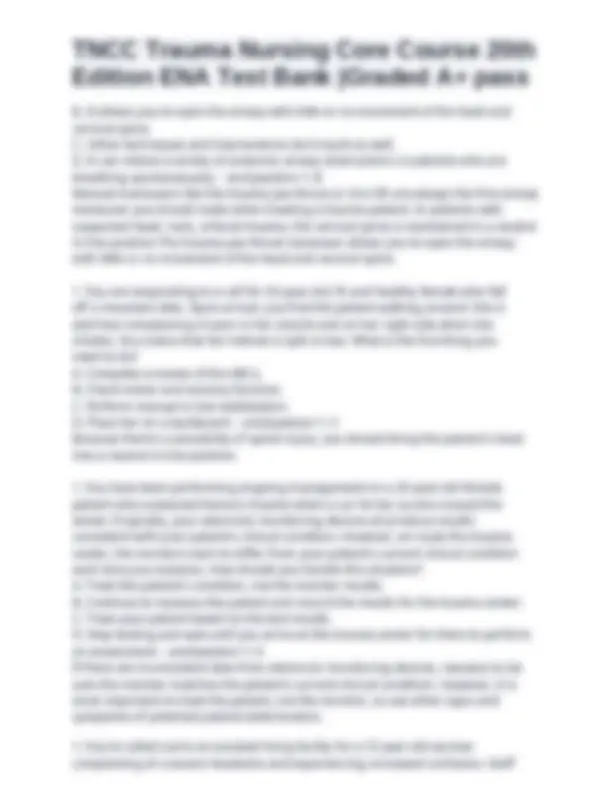

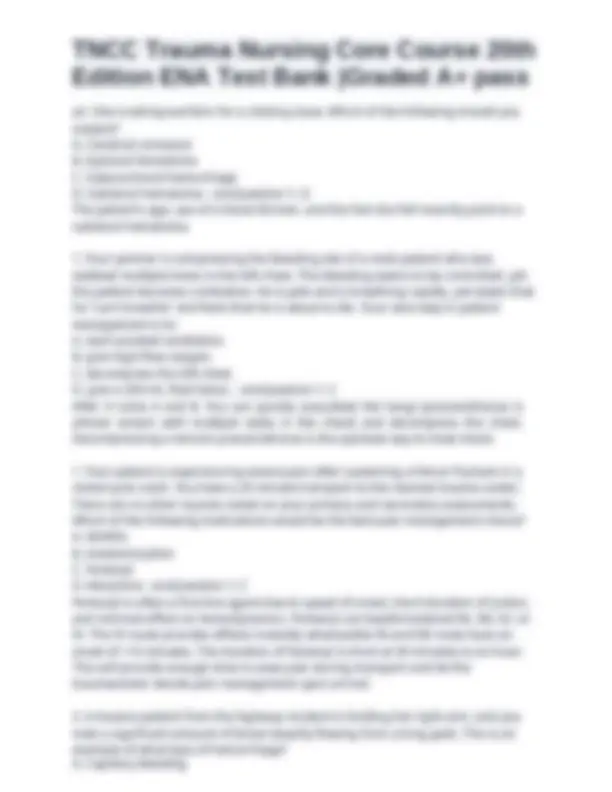

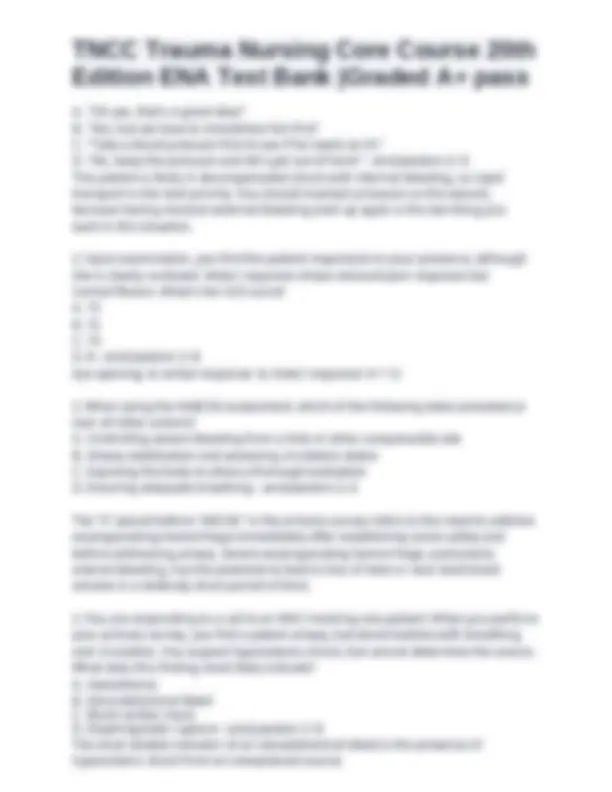

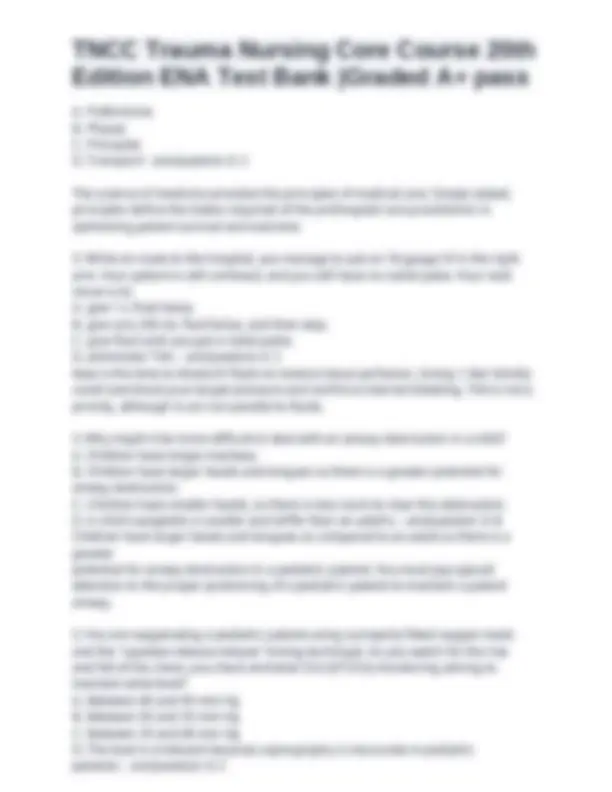

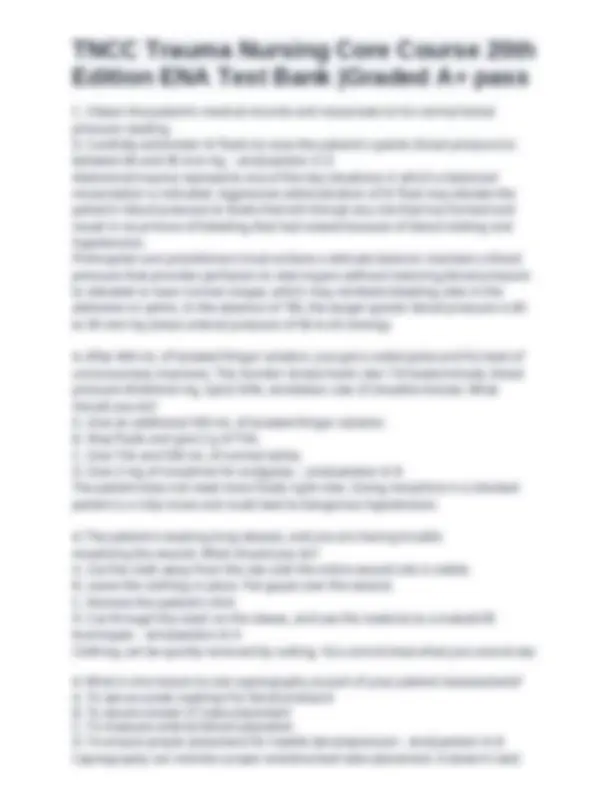

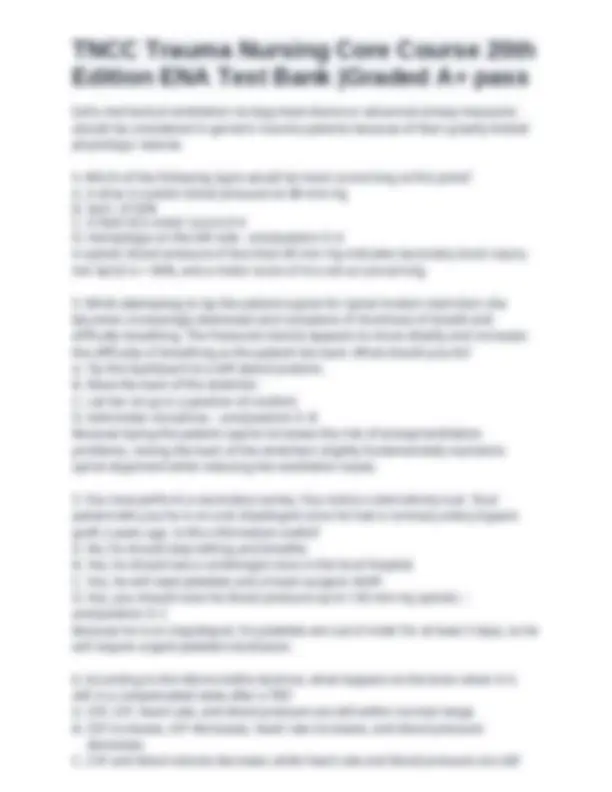

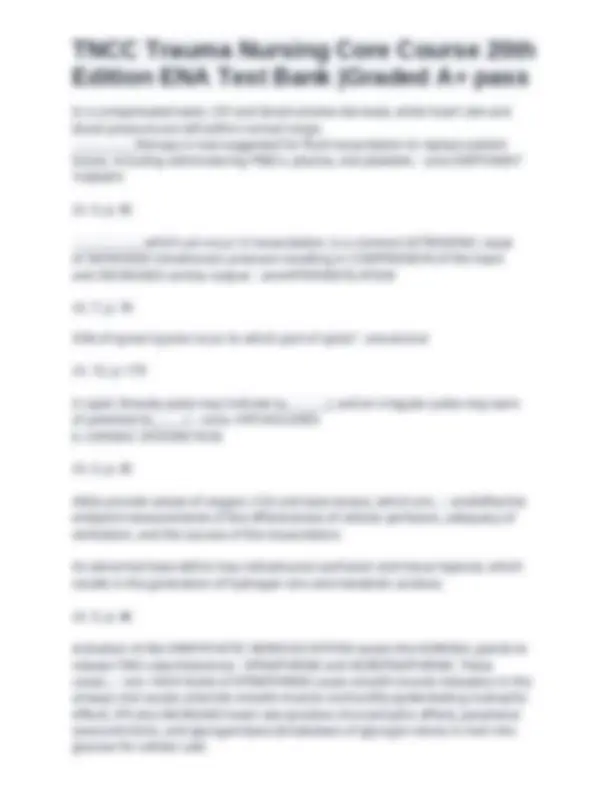

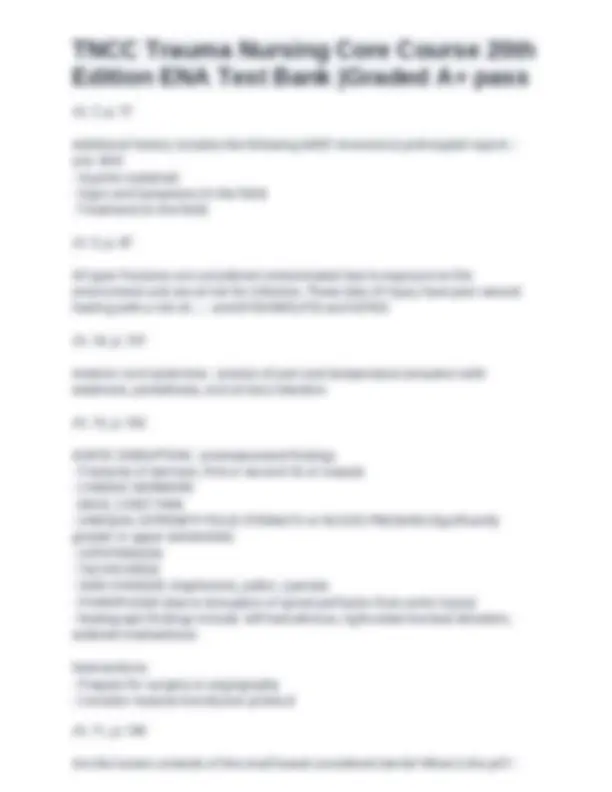

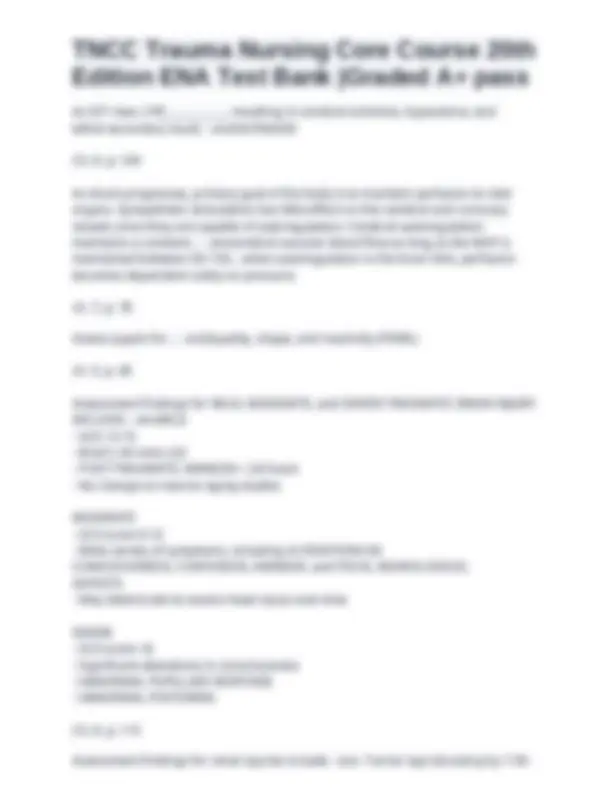

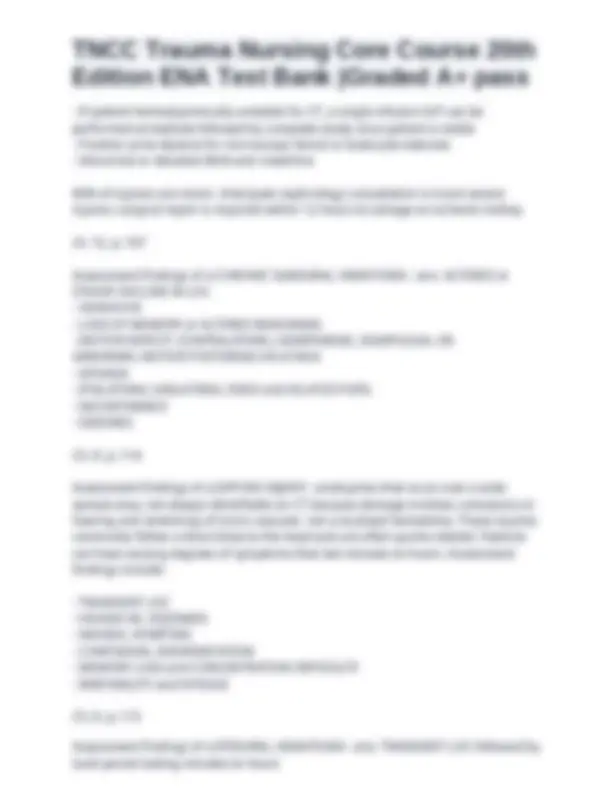

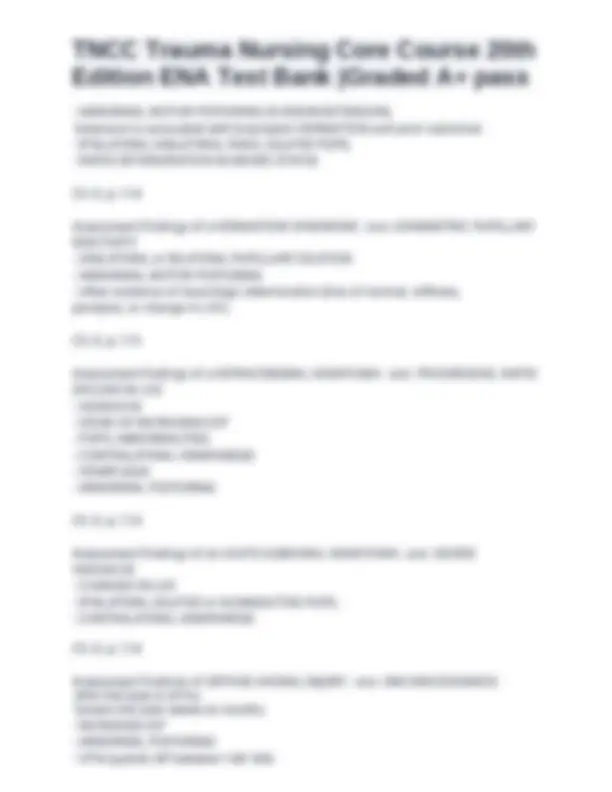



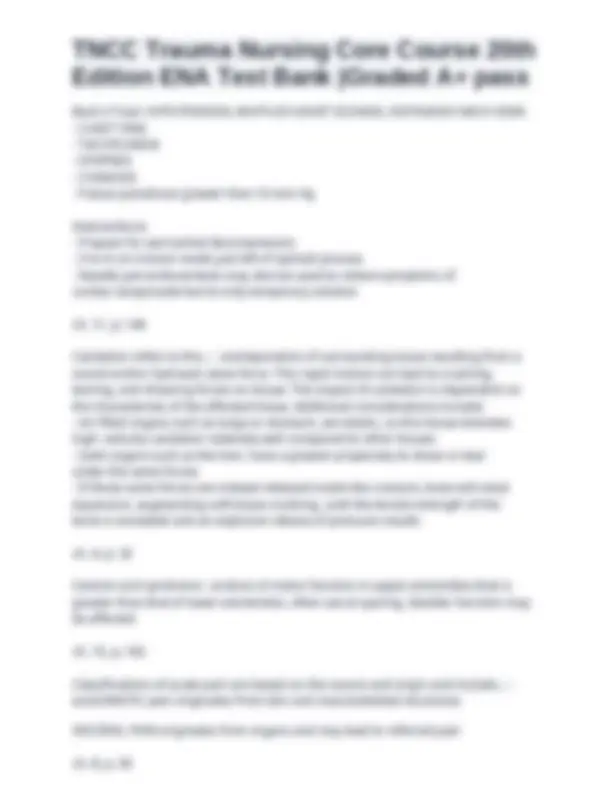

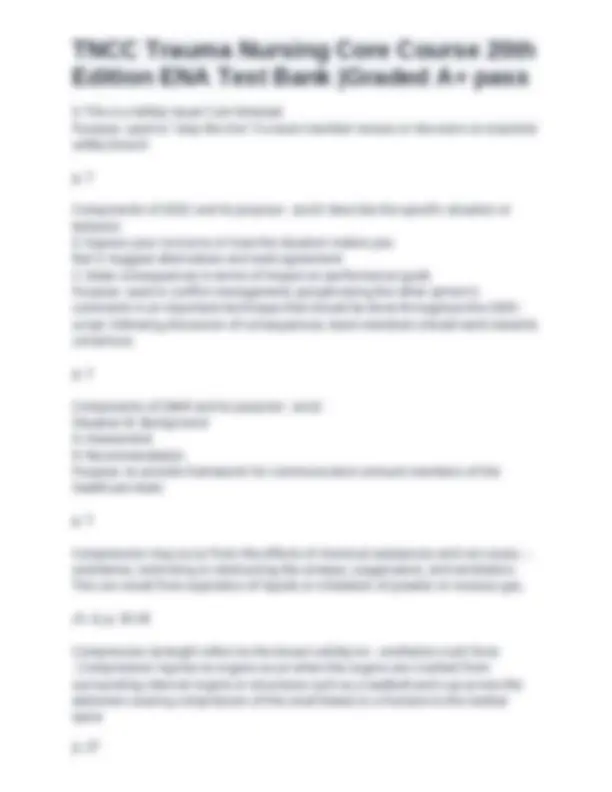

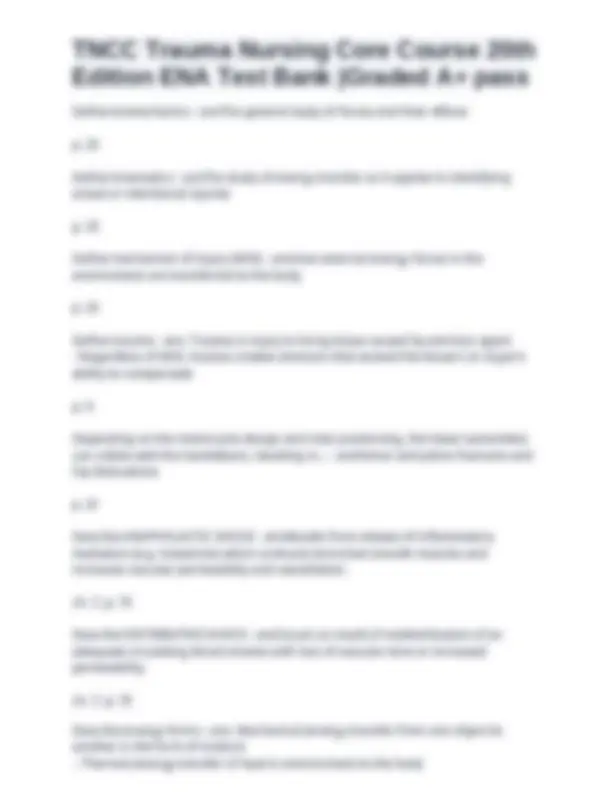

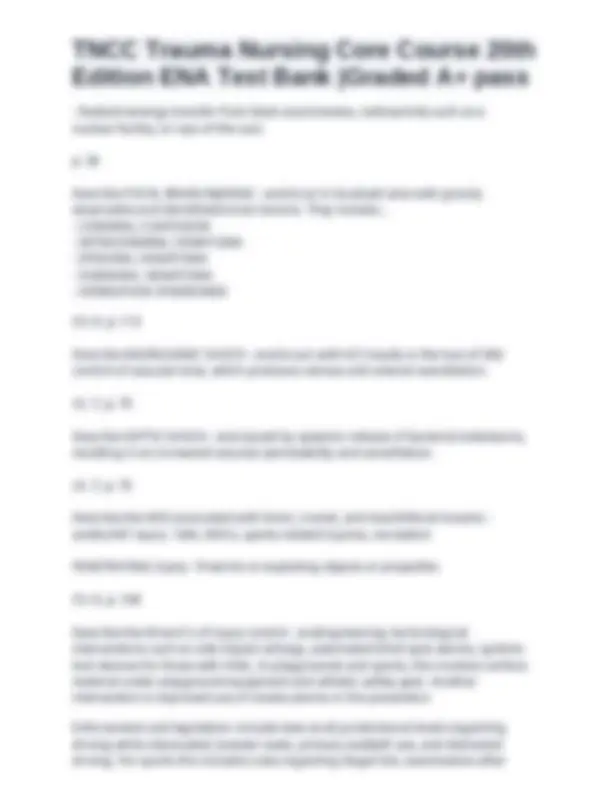

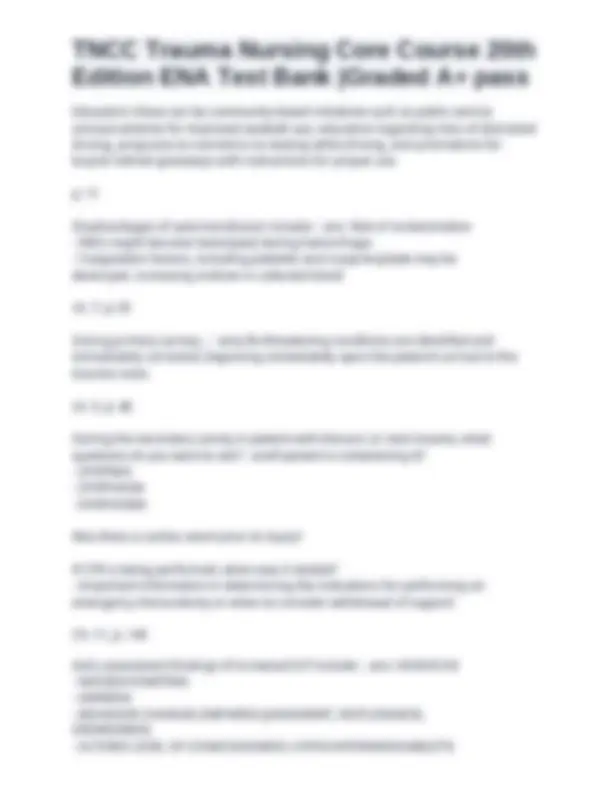

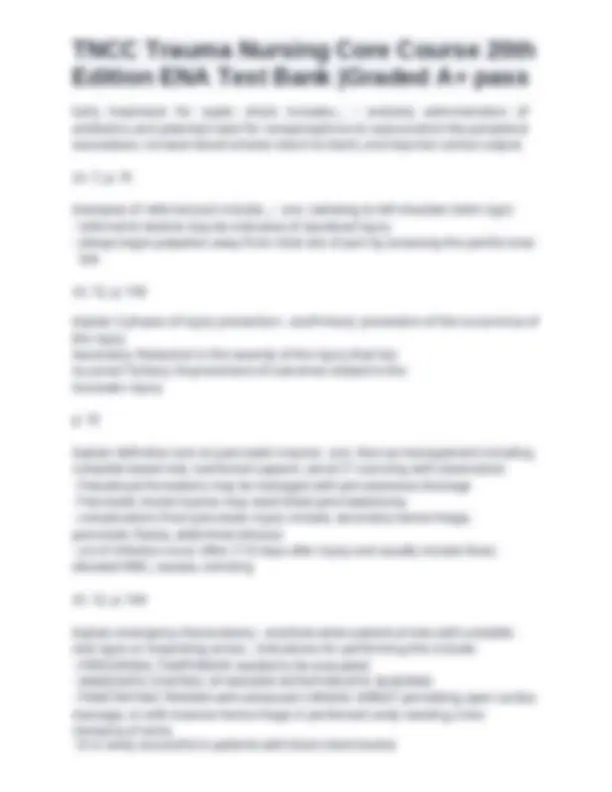

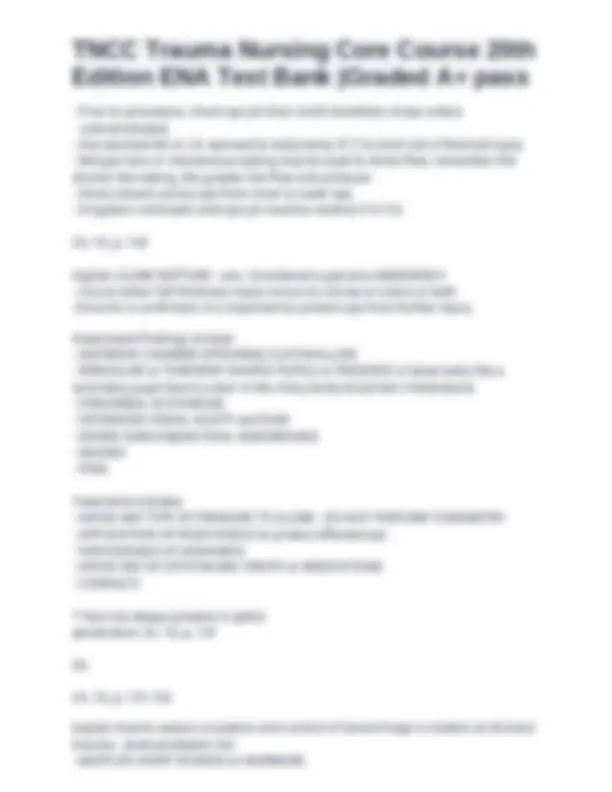

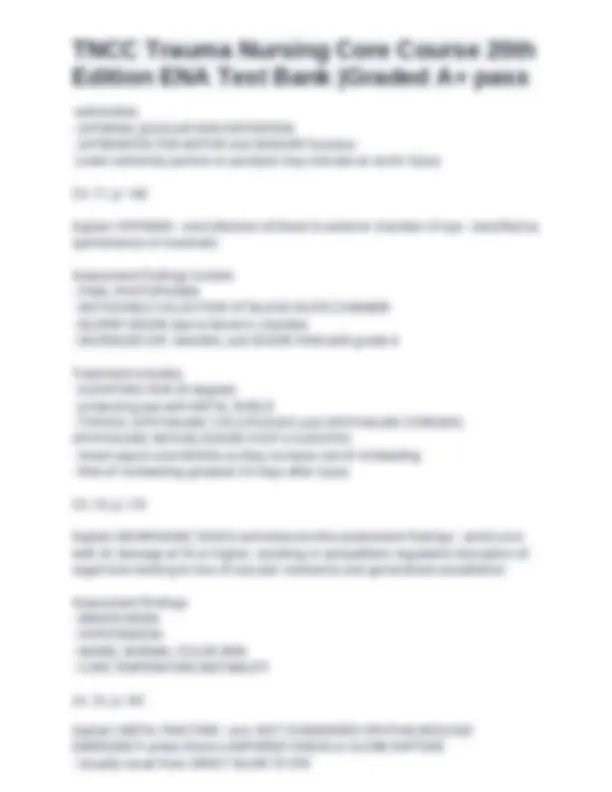

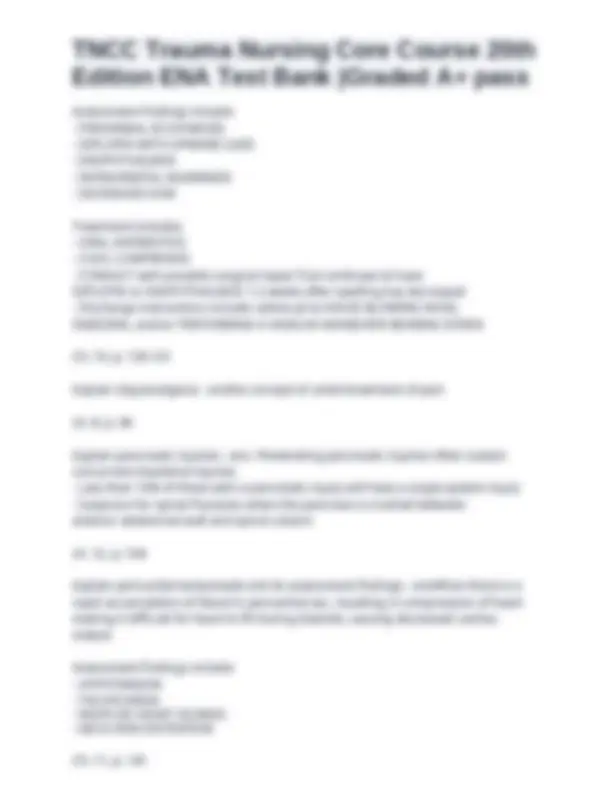

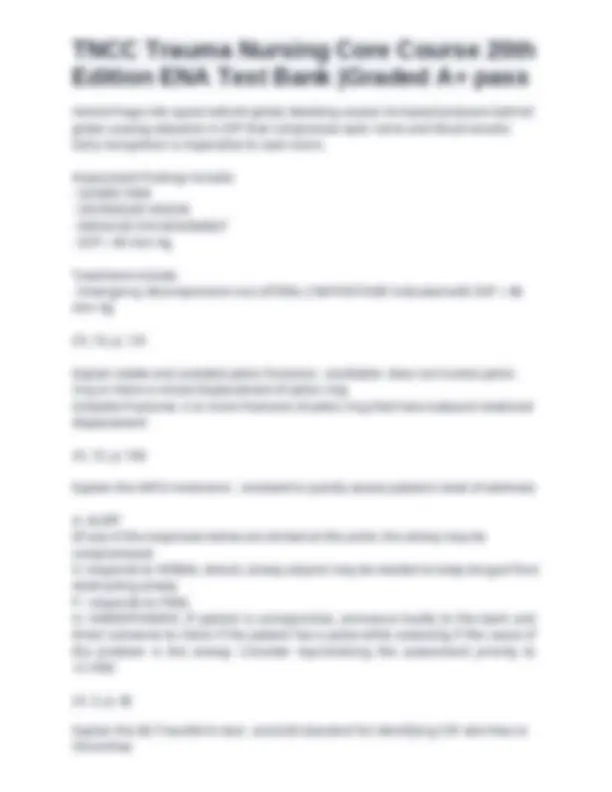

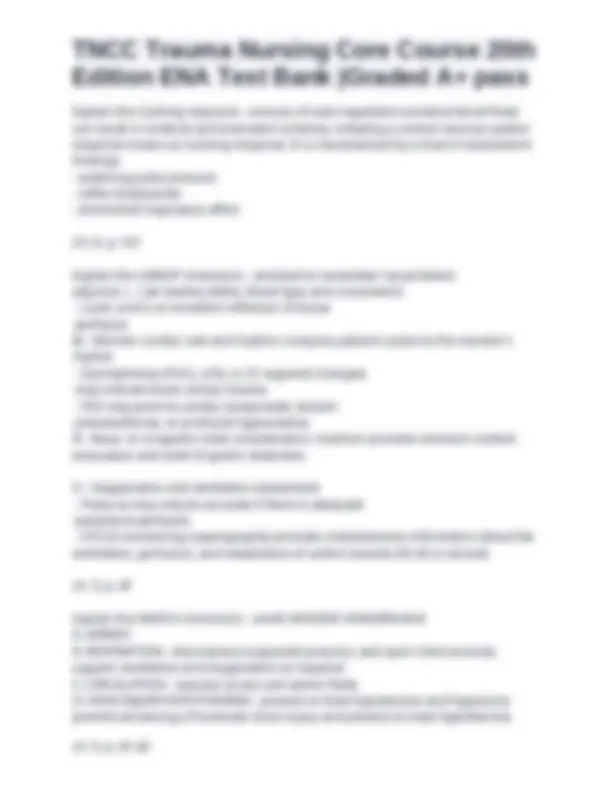

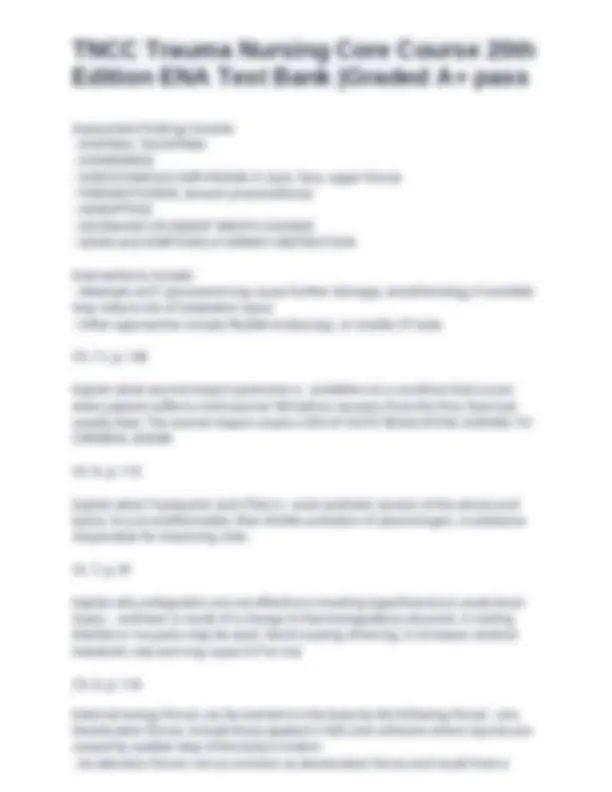

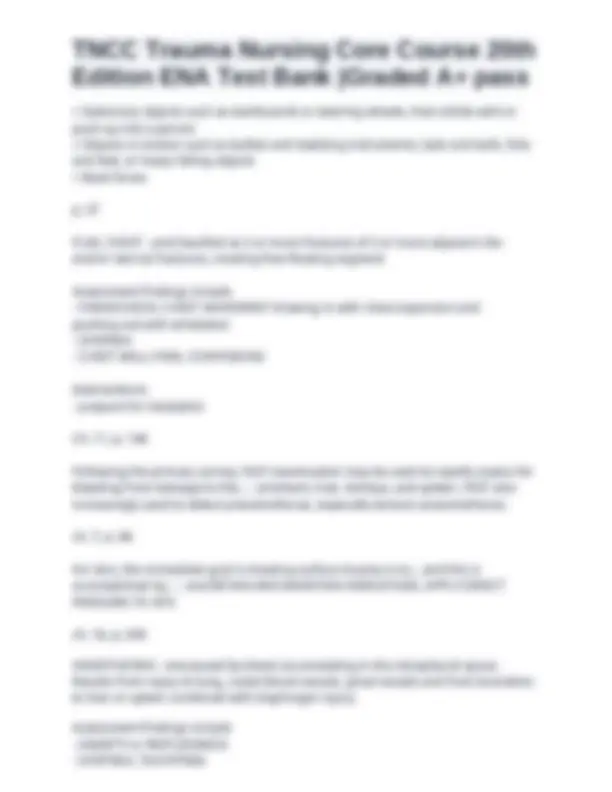

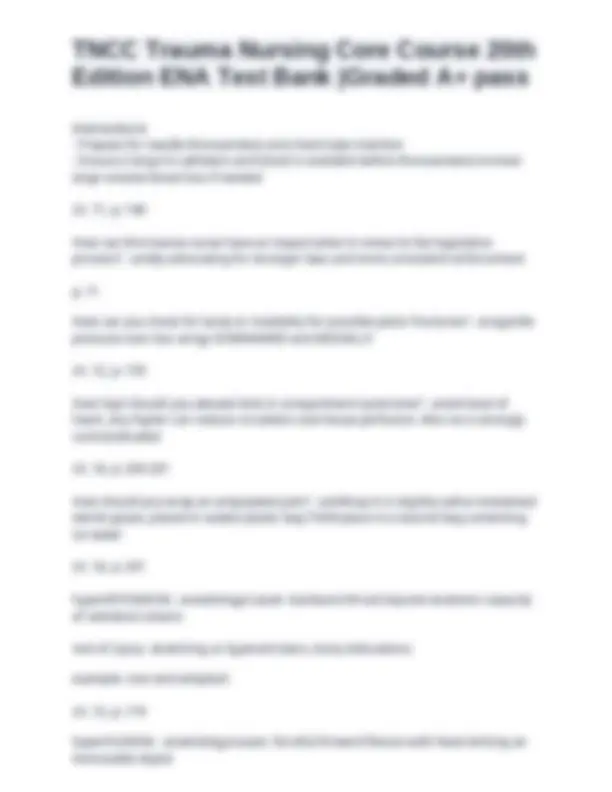

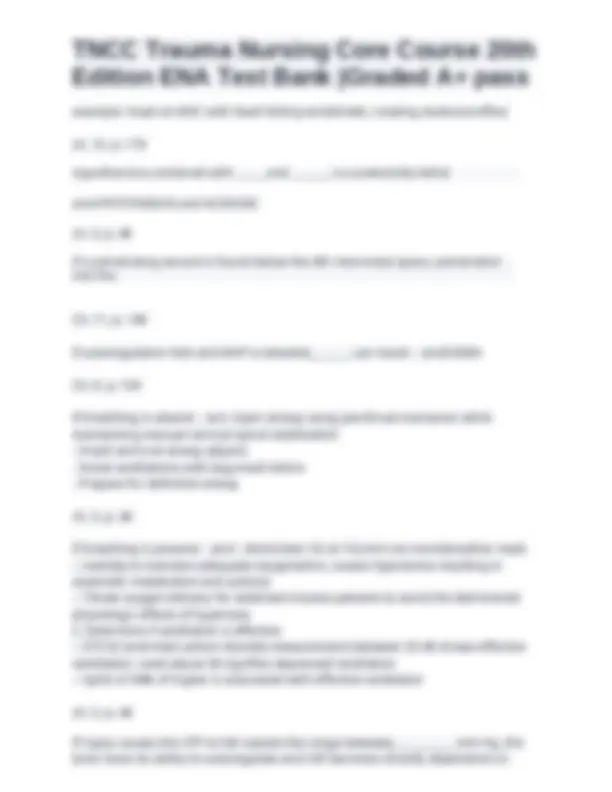

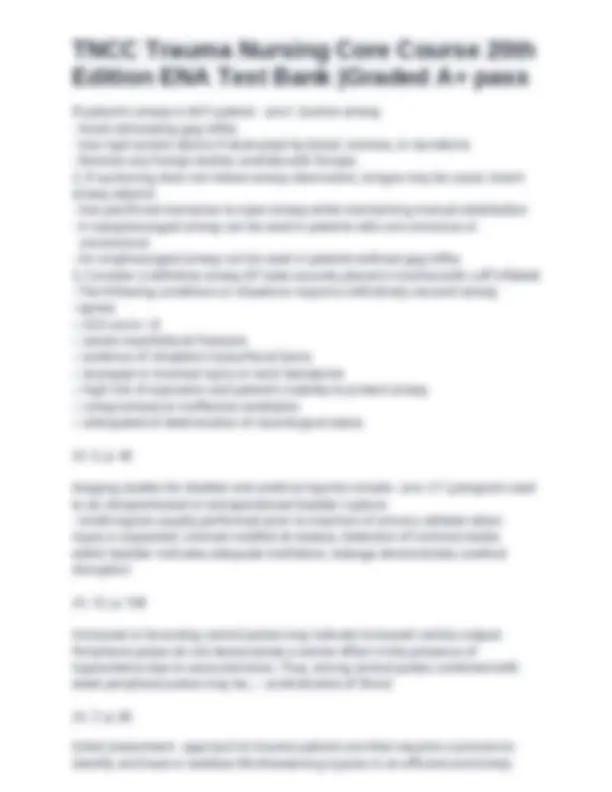

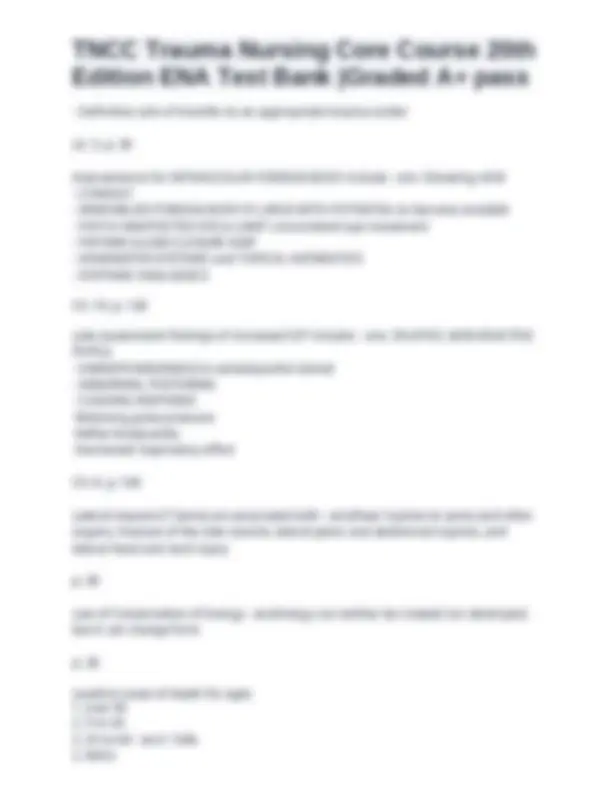

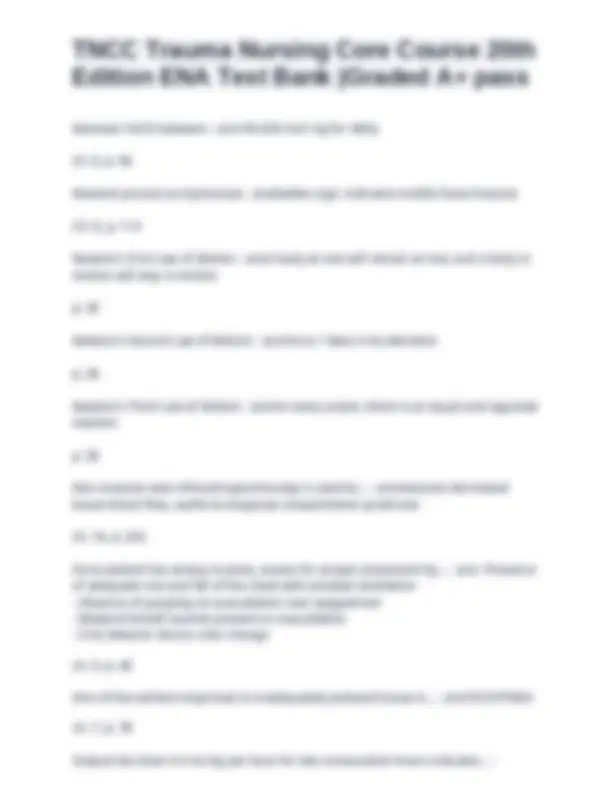

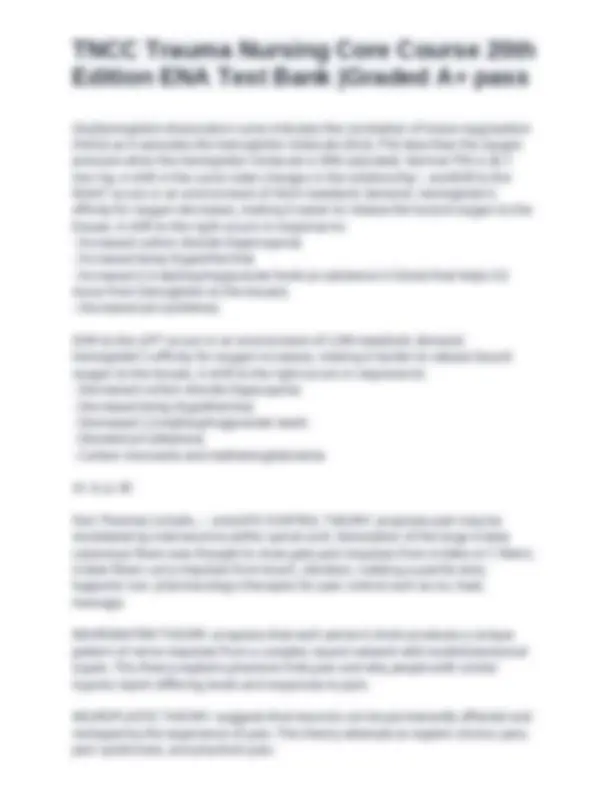

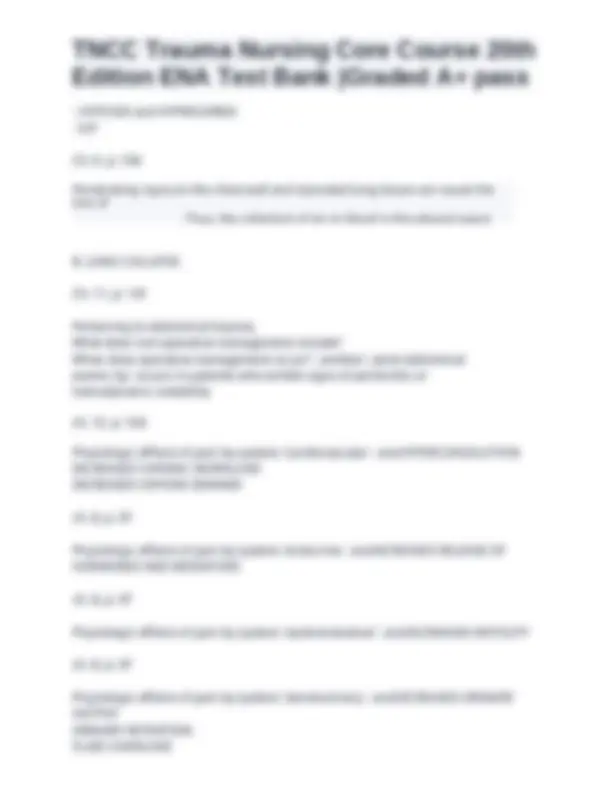

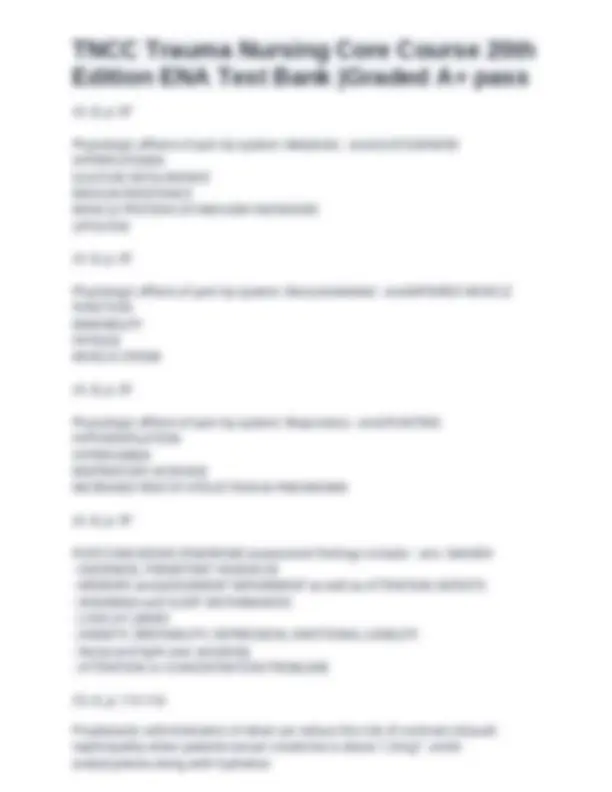

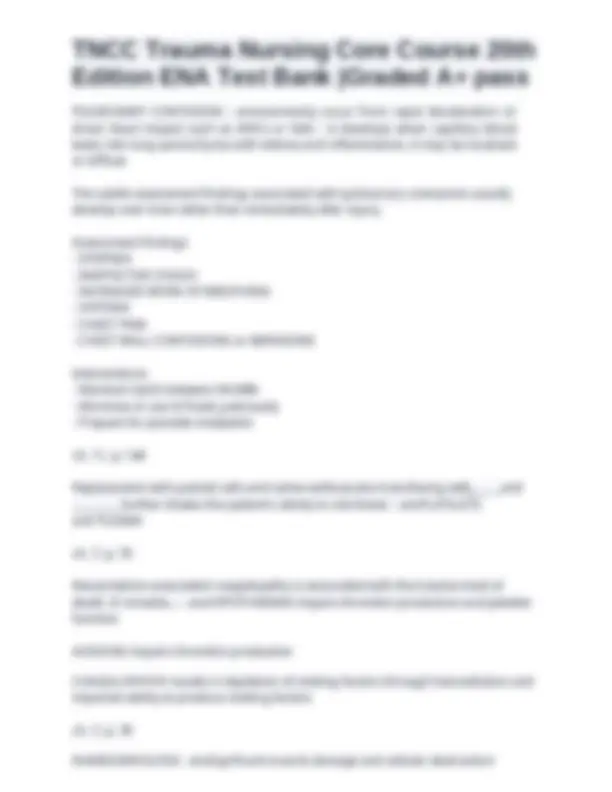

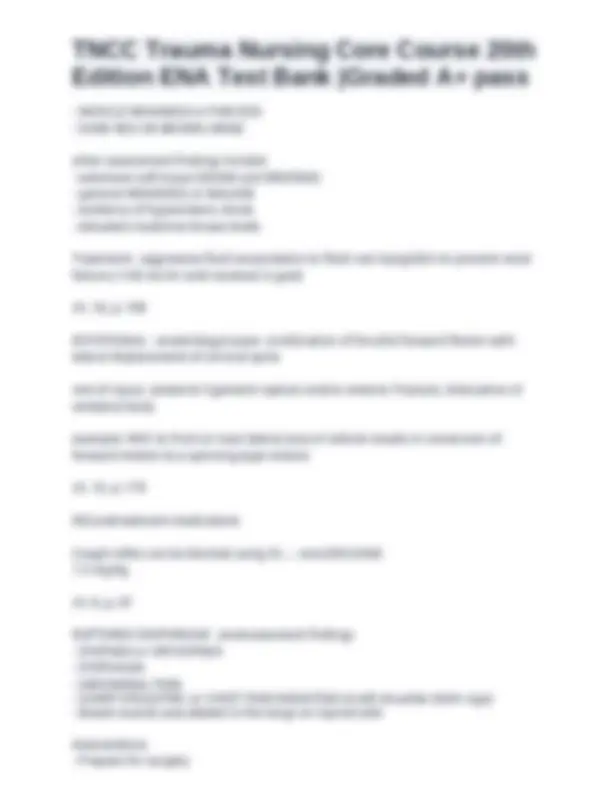

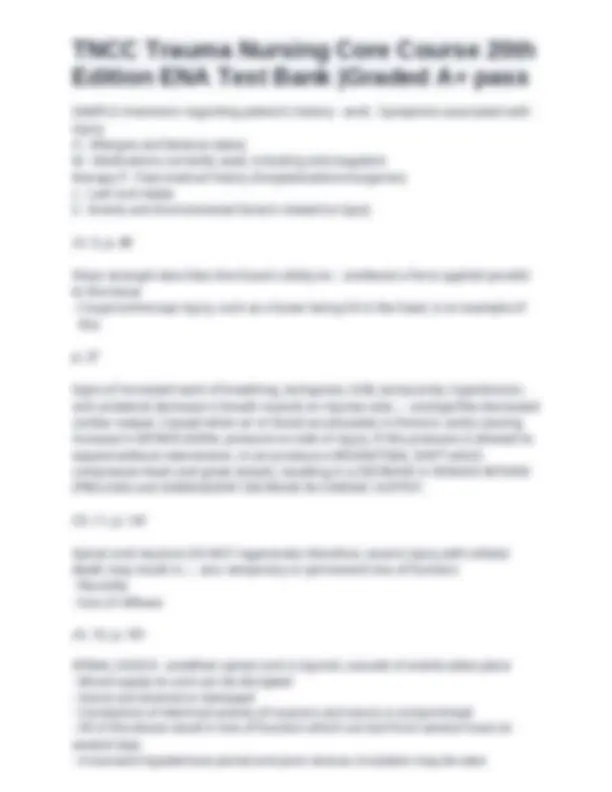

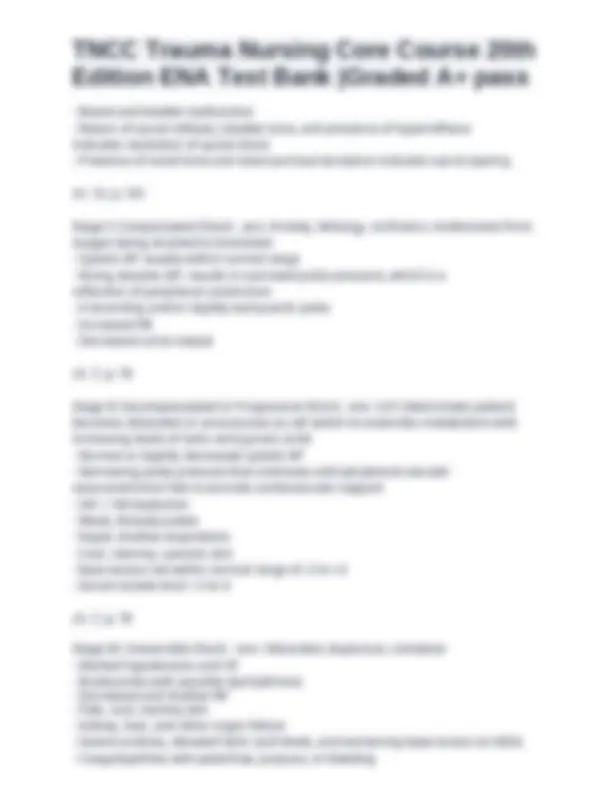

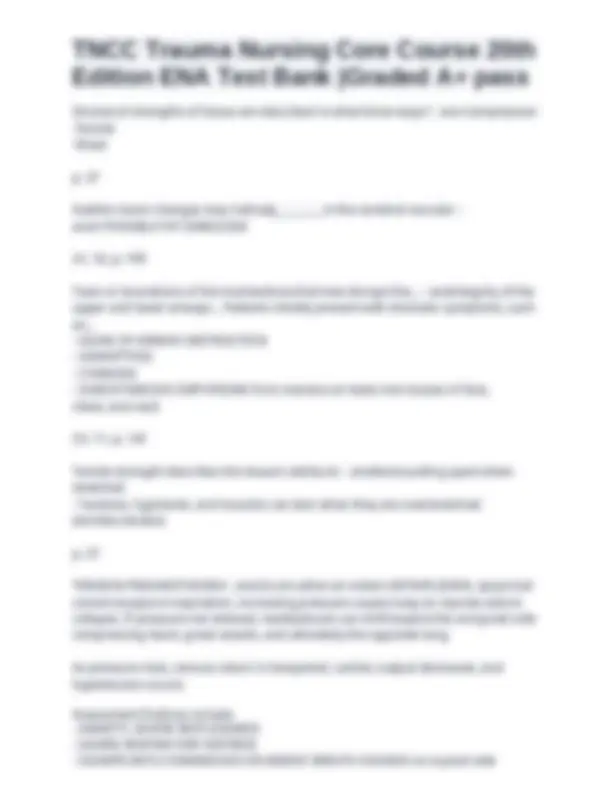

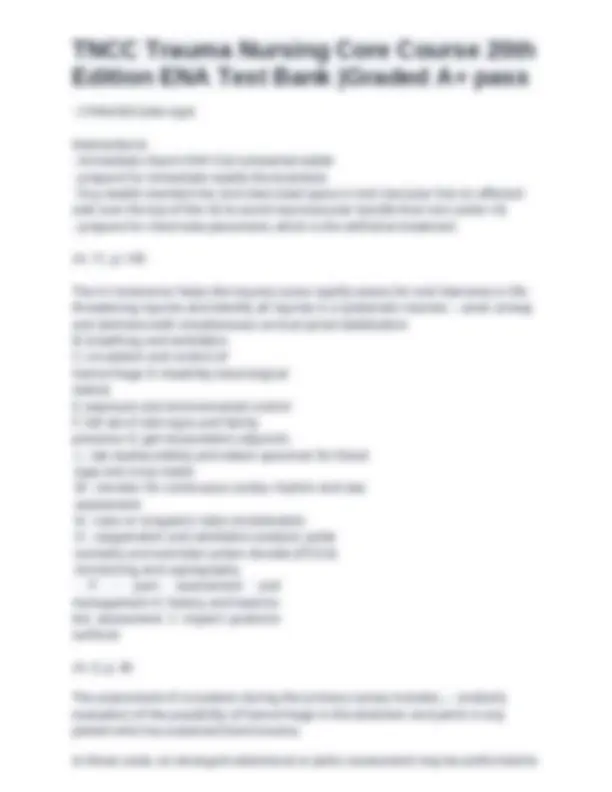

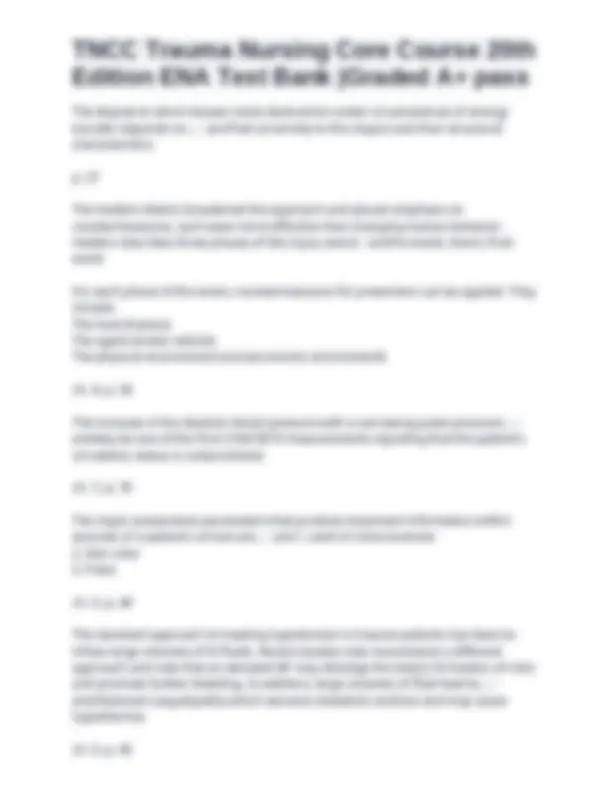

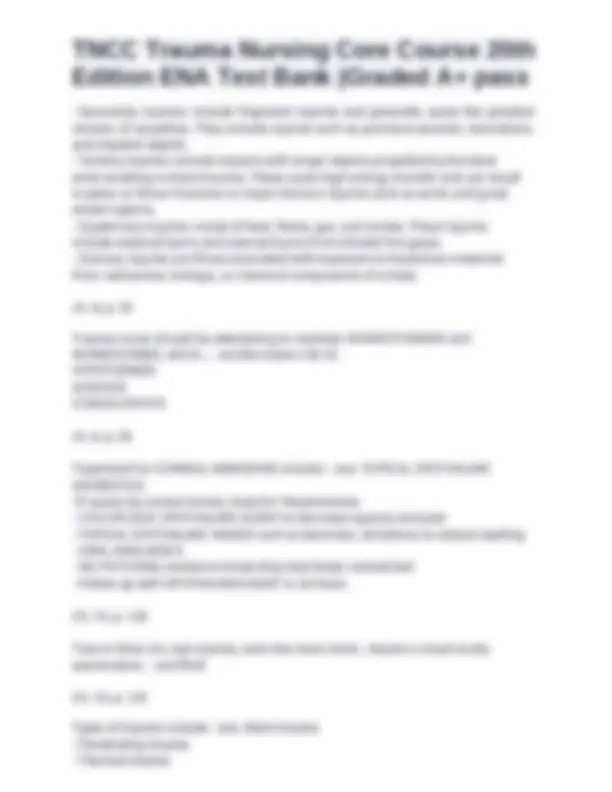

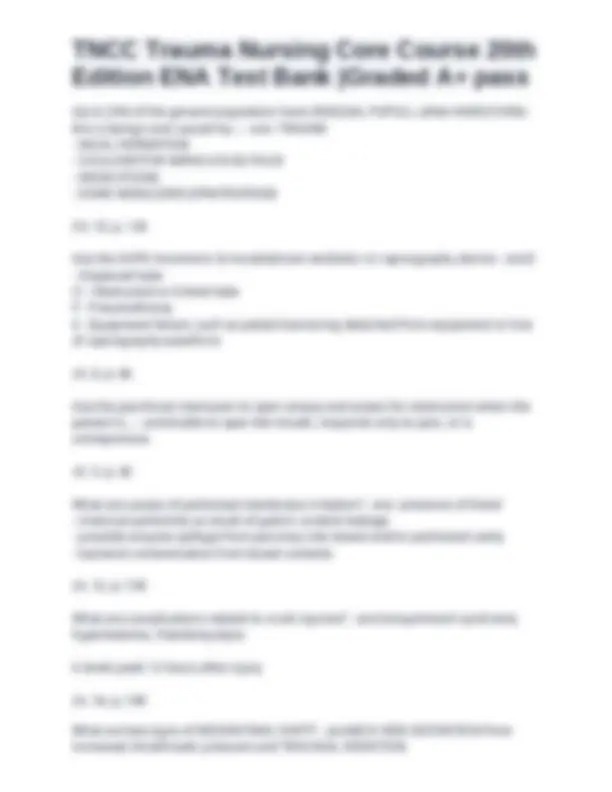

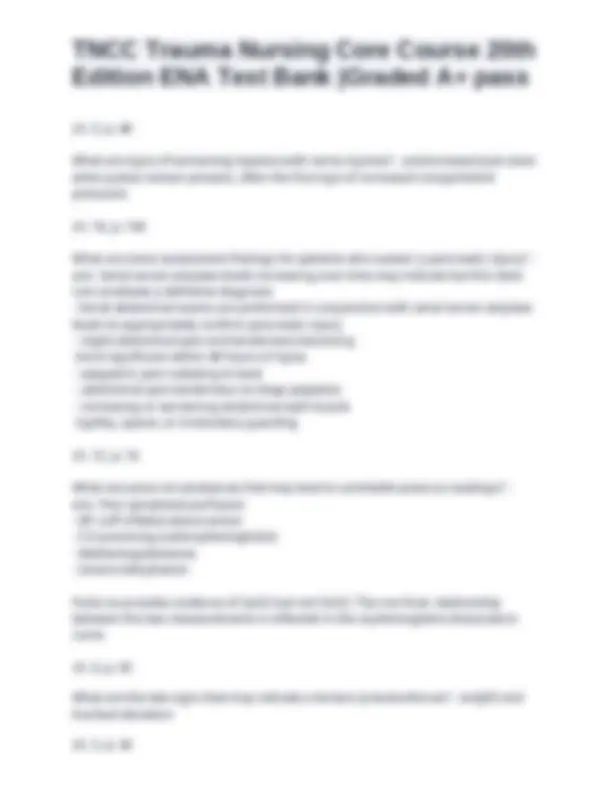

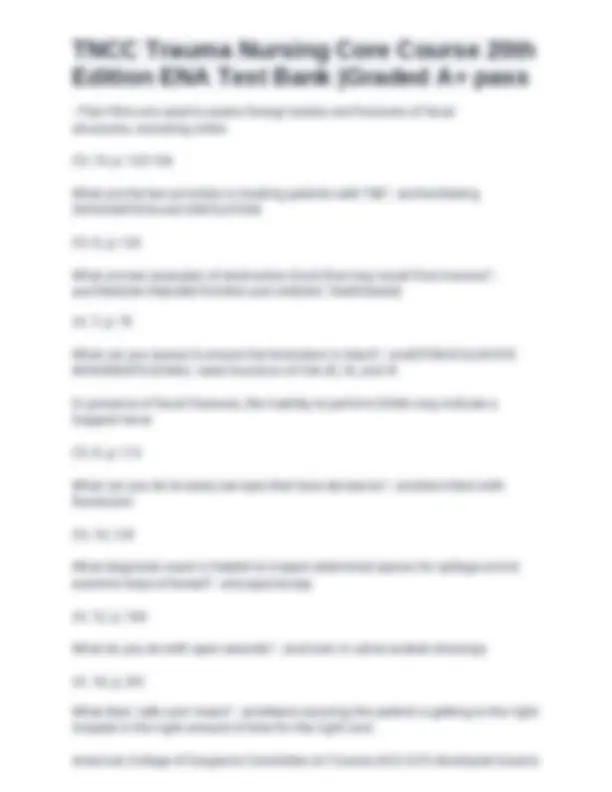

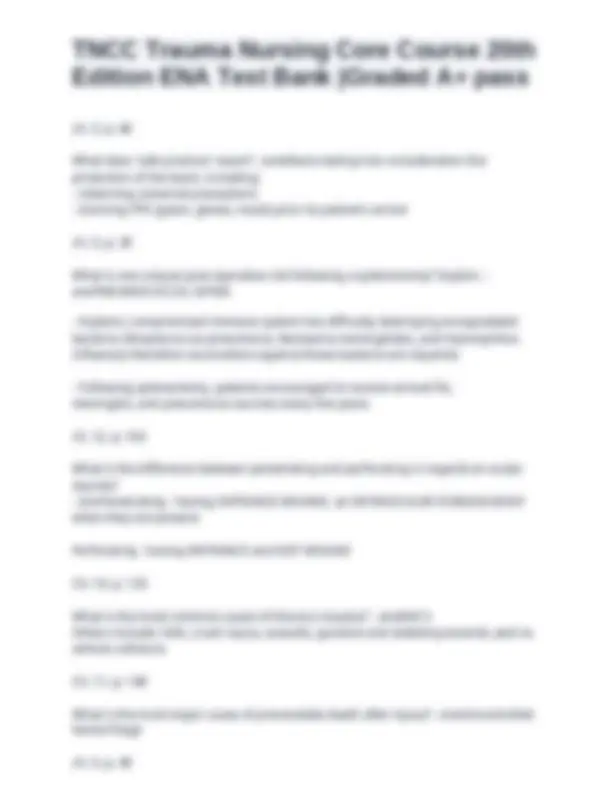

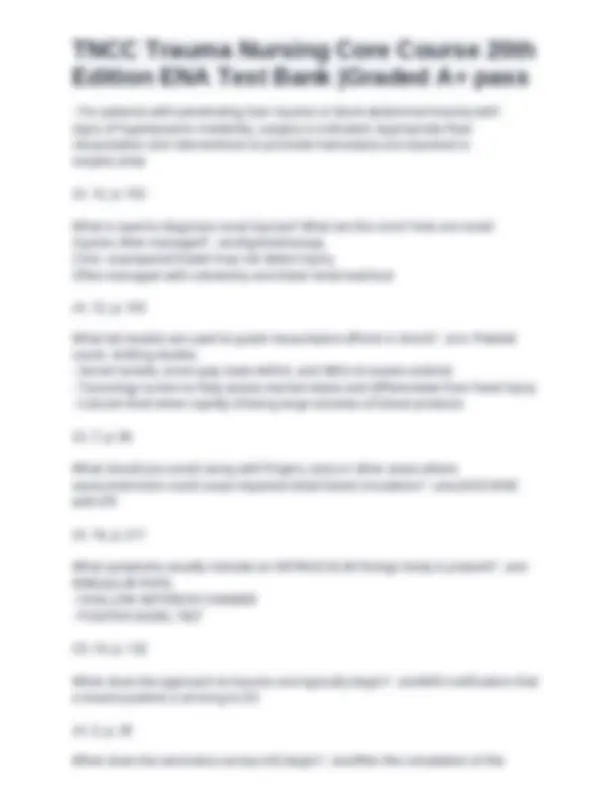



Study with the several resources on Docsity

Earn points by helping other students or get them with a premium plan


Prepare for your exams
Study with the several resources on Docsity

Earn points to download
Earn points by helping other students or get them with a premium plan
Community
Ask the community for help and clear up your study doubts
Discover the best universities in your country according to Docsity users
Free resources
Download our free guides on studying techniques, anxiety management strategies, and thesis advice from Docsity tutors
A test bank for the TNCC 20th edition, emphasizing critical thinking in trauma patient management. It features questions and answers on patient assessment, airway management, shock treatment, and pain management in trauma scenarios. Designed to prepare nurses for trauma situations, it tests knowledge and decision-making skills in emergency care. Covering initial assessment, interventions, and ongoing management, it's a valuable resource for nursing students and professionals. This test bank enhances expertise in trauma care and improves patient outcomes, offering a review of trauma nursing principles and practices. Questions promote critical thinking and problem-solving, enabling informed decisions under pressure, emphasizing continuous reassessment and treatment adaptation.
Typology: Exams
1 / 101

This page cannot be seen from the preview
Don't miss anything!





























































































extensive injuries. You note gurgling respirations. Why should you use the trauma jaw thrust maneuver first when dealing with a trauma patient? A. It's an easy technique that always works to open the airway.
reports she fell out of her wheelchair earlier in the week but didn't appear to be hurt; however, she's become increasingly disoriented over the last day or so. Vital signs show: BP 110/90; heartrate 118 and irregularly regular; ventilation rate 20 and slightly labored; SpO2 93% on room
air. She is taking warfarin for a clotting issue. Which of the following should you suspect? A. Cerebral contusion B. Epidural hematoma C. Subarachnoid hemorrhage D. Subdural hematoma - ansQuestion 1: D The patient's age, use of a blood thinner, and the fact she fell recently point to a subdural hematoma.
A. Preoxygenate to maximize oxygen saturation. B. Place the patient in a "sniffing"position. C. Clear the mouth of any obstructions. D. Prepare the patient for immediate transport. - ansQuestion 2: A Before insertion of any invasive airway, the patient is preoxygenated with a high concentration of oxygen using a simple airway adjunct or manual airway procedure.
A. Preferences B. Phases C. Principles D. Transport - ansQuestion 3: C The science of medicine provides the principles of medical care. Simply stated, principles define the duties required of the prehospital care practitioner in optimizing patient survival and outcome.
The proper level to maintain is between 35 and 40 mm Hg.
blood pressure, so it cannot beused to determine if a patient is hypotensive. Pulse oximetry, not capnography, measures arterial blood saturation. Capnography is not useful in needle decompression.
Early mechanical ventilation via bag mask device or advanced airway measures should be considered in geriatric trauma patients because of their greatly limited physiologic reserve.
within normál range. D. CSF decreases, ICP increases, heart rate decreases, and blood pressure increases.